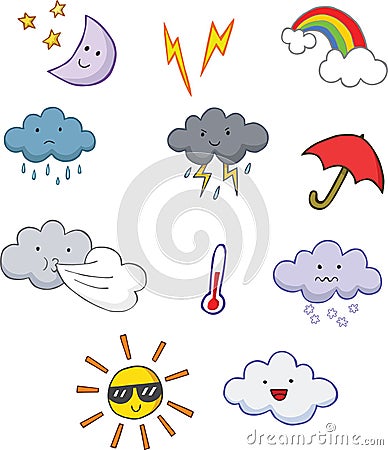by Viv Forbes
 The current heatwave in Australia will inflame
the carbonistas who will claim it is caused by wicked humans exhaling and
exhausting carbon dioxide.
The current heatwave in Australia will inflame
the carbonistas who will claim it is caused by wicked humans exhaling and
exhausting carbon dioxide.But carbon dioxide is almost irrelevant to local heat conditions.
That is all about wind.
If the wind blows from the summer tropics for days, we will have a heat wave and possible bushfires; but if we get a winter gale from polar regions there may be brass-monkey mornings, sleet and sheep farmer alerts.
Image sourced [here]
If it blows from the sea we may get enervating humidity and thunder storms; but
if it comes from the desert we may get lip-cracking dryness, whirl-winds or
dust storms.
If there is no wind at all, the heat will peak after lunch and it will be
coolest just as the sun rises.
And if you are yachting in Antarctic waters, the wind can trap your ship in floating sea ice if you are a careless ninny. |
| Imaged sourced The Australian: Heatwave blows in on a fiery desert wind |
Simple stuff really, except for government-funded climatologists with giant computers needing a software upgrade.
And carbon dioxide has almost nothing to do with any of it


How many family members were on board. This was a junket designed to coincide with school holiday. How many people under 18 were on board?
ReplyDeleteYes James, was it ever a serious scientific endeavour or some romantic adventure poorly planned & executed to retrace Mawson's step and show that there was less ice around but in a location where Mawson sailed through open seas the Turney "ship of fools" get stuck in pack ice.
ReplyDeleteAnthony Watts asks 20 questions in his post, Now that the ‘Ship of Fools’ is safe in Antarctica, tough questions need to be asked
What keeps us Warm? by Viv Forbes
ReplyDeleteWhat determines surface temperature at any spot on earth?
Apart from a tad of geothermal heat and a wisp of heat from nuclear power generators, every bit of surface energy (including coal and biomass) comes directly or indirectly from the sun. There is no other source of surface heat – everything else just stores, releases or re-directs solar energy.
Surface heat is maximised when the sun is directly overhead, near a peak in the sunspot cycle and when Earth’s orbit comes closest to the sun (perihelion). The hottest places on earth will be found near the equator, around mid-day, in mid-summer, at perihelion and when there are no clouds in the sky to reflect solar radiation. Temperature will be maximised at full Moon and when there is no cooling wind and no nearby surface water or moist soils to cool things by evaporation. Since higher temperature also occurs at lower altitudes, one of the hottest places on earth is Death Valley, a desert below sea level, where the temperature can reach 56℃ on a mid-summer afternoon.
Frigid temperatures are found near the poles, where solar energy is weak. The coldest place on Earth is Vostok at high altitude in Antarctica where the air is very dry and where the temperature can go as low as minus 89℃ with a cloudless sky in the dead of winter.
Since both extremes could occur simultaneously, Earth’s maximum daily temperature range is thus up to 145℃. But at any single place, the diurnal variation is more likely to be about 15-40 ℃.
Carbon dioxide has no effect on any of the above temperature drivers – it generates no heat, cannot affect latitude, solar orbits, sun spots, moon phases, altitude, season, time of day, clouds or the proximity of water. All it can possibly do is encourage plant growth, and intercept, absorb and redirect a tiny bit radiant energy passing either way between the sun, Earth’s surface and space. But that effect is almost exhausted at current levels of carbon dioxide. Doubling the carbon dioxide content from 400 ppm to 800 ppm (which may take the next 100 years) might possibly increase surface temperatures by 1- 2 ℃ - not even noticeable compared to the daily temperature ranges we cope with now.
Everyone can feel the powerful warmth of the rising sun, the variations between summer and winter, the moderating effect of clouds and the shock of hot and cold winds.
But even if carbon dioxide levels doubled overnight, most people on earth would not notice any difference